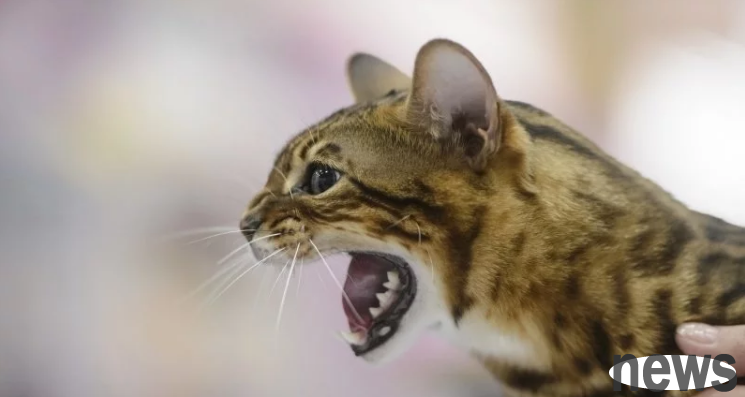The cultural relics unearthed from the ancient trading town "Jakent" in the southern part of the Central Asian country of Kazakhstan often have feline patterns and artworks, but they are all large or medium-sized cats. The earliest records...
The cultural relics unearthed from the ancient trading town "Jakent" in the southern part of the Central Asian country of Kazakhstan often have feline patterns and artworks, but they are all large or medium-sized cats. The earliest records of domestic cats in history began in the 6th century. The Persians were already raising cats at that time. However, an academic team composed of Kazakhstan and Germany recently identified the skeleton of a cat in the Jakkent area and found that it is not only the largest domestic cat in the history of the Silk Road, but also a witness to the exchange of nomadic and urban cultures.
Nomad towns dug up rare cat remains

Jakent (Dzhankent, Jankent) was built in the 7th century as the Oghuz Yabgu established in 766 by the Turkic tribe "Oghuz" The capital of the state, and Jakent means "new city" in Turkic. It was located in the present-day southern Kazakh city of Kazaly. It was an important economic and trade town on the Northern Silk Road at that time, but was abandoned between the 12th and 14th centuries. It is speculated that the change of the Syr Darya water course may have affected the change of trade routes, or it may be the political situation, because the Oghuz Yehu state perished in 1055.
In addition, the Oghuz are a confederation of Turkic tribes that lived a nomadic life in the Central Asian grasslands. There were no records of domestic cats before the 18th and 19th centuries, and no feline remains were unearthed before this period. However, cat bones were rarely unearthed in Jakent. The University of Halle-Wittenberg in Germany, the University of Tübingen, the University of Kazakhstan Zilulda, and the Russian Higher University of Economics collaborated to "restore" the life of this cat.
Sickness and injury require human care to survive
British "Scientific Report" Reports) published a research report by an international research team stating that the cat skeleton was found in a shell mound in an abandoned house where the Jakent Fortress meets the city wall. It was confirmed to be a male cat and was about 58 weeks old (about a year and a month). Recent genetic research shows that the ancestors of modern domestic cats are African wild cats. However, some studies have said that the occurrence of African wild cat mitochondrial haplotypes in Central Asian wild cats is relatively high, and the ancestor of the "Jakant Cat" cannot yet be identified.
The research team stated that because the nuclear genome database lacks genetic data on ancient Central Asian wild cats, and previously collected data on modern Central Asian wild cats show that Central Asian wild cats are different from domestic cats and other cat species, it is speculated that the "Jakkent cat" has a high probability of being related to domestic cats from the Middle East, and the "Jakente cat" may also have migrated from the north to the Middle East. In addition, through paleopathological research, it was found that the cat suffered from trauma, inflammation, arthritis, periodontal disease and other diseases during its lifetime, but was cared for by humans, so it is speculated that it may be a domestic cat.
The introduction of pet culture The earliest domestic cat report on the Silk Road
pointed out that through the identification of the joint pores of the palatine bone and distal tibia, the characteristics of degenerative joint disease, and the formation of bone spurs on the joint edges, it is reasonably supported that the "Jacquet cat" was more than 1 year old during his lifetime. In addition, new bone grew at the ligament and tendon attachment sites of the joints, and morphological changes occurred in the fractured part of the tibia. The effects of these conditions made it difficult for the "Jakent Cat" to move before death. Moreover, it also suffered from inflammation and tooth loss during its lifetime, which affected its hunting, eating and defense capabilities. It is speculated that without human care, the "Jakent Cat" would not be able to survive on its own.
The report concludes that the discovery of the "Jacant Cat" pushed the history of domestic cats in the area back 1,000 years, to about 775 to 940, and that the ancestors of this male cat may be Middle Eastern domestic cats, but genetic comparisons still need further confirmation. Stable isotope and dental paleopathology data show that the cat adopted a high-protein diet, and periodontal disease may be the cause of death. The cat needs human care to survive, while highlighting the relationship between pets and Central Asian steppe culture, which comes from Persia, Khwarazm, Great Khorasan and other regions.
The research team pointed out that although it is not certain whether the "Jakent cat" belongs to the local cat species or was introduced from other places, it is certain that compared with other nomadic peoples, the residents of Jakent have different ideas about pets. "They carefully care for and take care of the cat's life, providing high-protein diet and medical care. This cat is not only the earliest domestic cat known on the Silk Road, but also a witness to the exchange and integration of nomadic and urban cultural worldviews in the rapidly globalizing world."